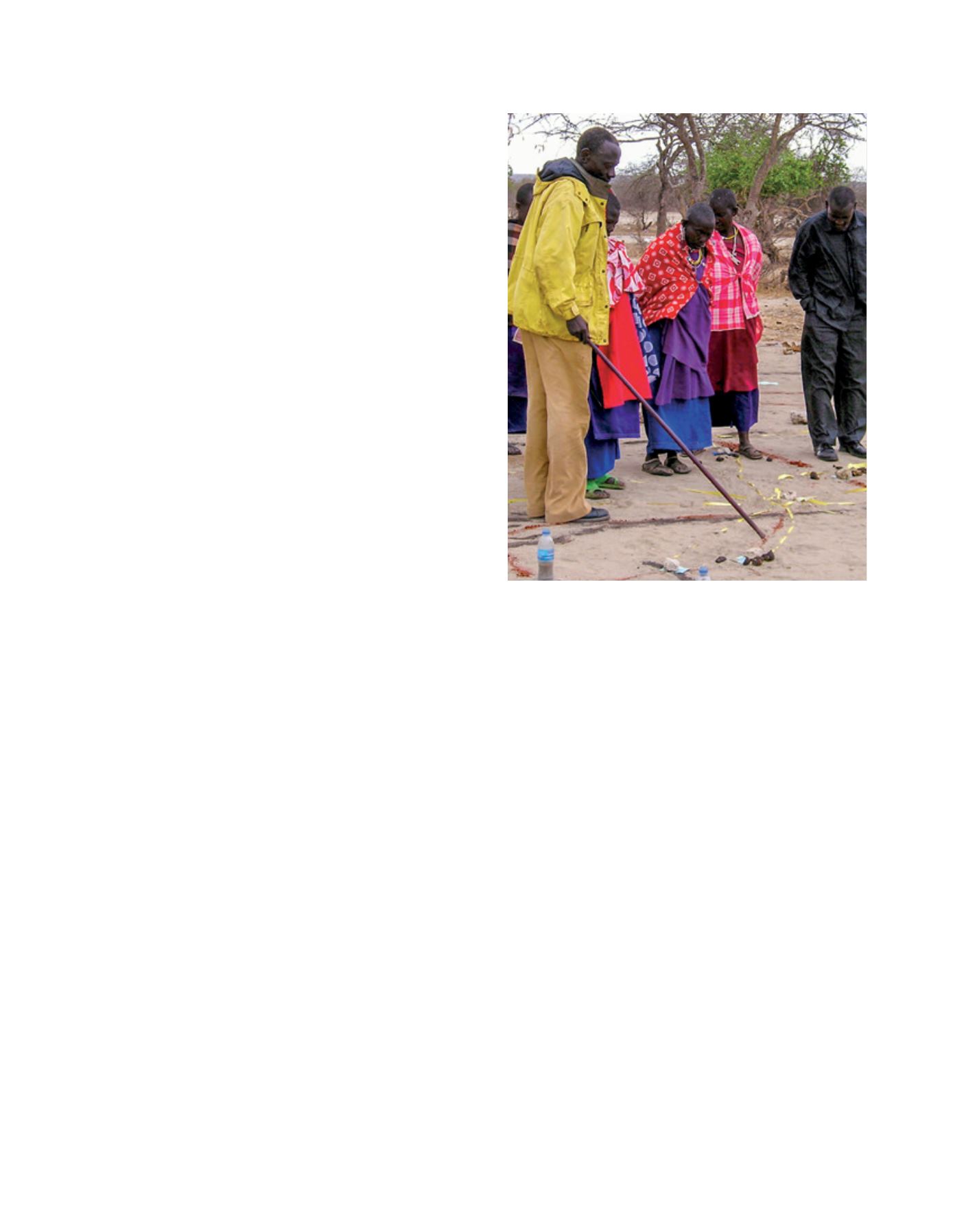

[
] 179
rights between civil society organizations at the national level,
while the CEDAW committee took up issues raised by STAR
Kampuchea in its questioning of the Cambodian Government
on compliance with the convention.
Making the law real for local land users
Often, countries do have laws and policies that protect
vulnerable land users, such as indigenous peoples or users of
customary land, but the laws and policies are not adequately
implemented. Many members of the coalition are active on
the ground to assist these vulnerable land users to claim their
rights. Two common ways of doing this are through direct
legal assistance or by training some community members as
‘paralegal’ experts. ILC member Trócaire, for instance, assists
Indian family farmers that depend on forests for their liveli-
hood in obtaining formal recognition of their forest tenure, in
accordance with the Forest Act approved in 2007.
In India, 375 million people live in forests or on their
fringes and are entirely or partially dependent on the forest
for their livelihood. The majority of these forest-dependent
people are family farmers from marginalized social groups
such as Adivasi (indigenous) and Dalit (untouchable).
In 2007, India formally granted the right to individuals and
communities to live in and cultivate forest land, through the
Tribes and other Traditional Forest Dwellers Act, also known
as the Forest Rights Act. However, the process of accessing
individual and community forest rights is highly technical,
and government agencies are not very proactive.
In Doliambo Village, Odisha, 105 Adivasi families and 18 Dalit
families who depended on the forest for their livelihood, lacked
any form of formal tenure. The village Forest Rights Committee
(FRC), the community institution tasked with determining indi-
vidual and communal forest rights, was set up by the Government
back in 2009, but not equipped with the understanding or skills
to fulfil its tasks. In 2009, ILC member Trócaire engaged with
local non-governmental organization Pragati to conduct trainings
and awareness programmes for the FRC members and villagers
on the steps necessary for resource mapping, lodging and attain-
ing individual and community forest rights.
After two years of lengthy bureaucratic procedures, 59 tribal
families from Doliambo secured a title for their land. All these
titles were issued jointly in the name of husband and wife. The
families are now able to farm their land in a regular manner,
and can rely on a steady source of food and income for their
families. “I had no land of my own,” said Gopinath Muduli of
Doliambo Village. “At last I have got a title over land. I can say
that I own land and my children will not be treated as landless.”
Promoting inclusive land governance
ILC also aims to be a hub for the identification, development
and uptake of innovative solutions in promoting inclusive
land governance. In the case of community land rights, the
coalition pilots and tests new solutions in order to demon-
strate that they are replicable and scalable. A consortium of
ILC members is working with the Tanzanian Government to
pilot participatory village land use planning. The technique
has already been demonstrated to be effective at mediating
long-standing conflicts between herders and family farmers
and as a way to increase their land and water tenure security.
Inhabitants of rangelands have engineered livelihood systems
that are particularly apt to their fragile environments, such as
livestock raising, small-scale farming and hunter-gathering.
However, increasing pressures on land are leading to conflicts
between different groups over the limited resources in this
fragile landscape, and undermining their production systems.
For years, the village of Msitu wa Tembo in Simanjiro
District, Tanzania, was the scene of land-related conflicts –
mainly between farmers and pastoralists. Several ILC members
working in the area, together with the District Council, assisted
the villagers in establishing a land use plan and setting up
borders indicating different land usage, as well as livestock
routes. All this was done in the spirit of compromise, with each
group agreeing to give up some of their demands. The farmers
opened up some of their land for cattle routes, and the pastoral-
ists stopped letting their animals into the fields to graze after
harvest. Regular meetings are now organized to air views and
resolve conflicts in their early stages. The Minister of Livestock
and Fisheries Development has called for this model to be repli-
cated in other livestock production areas of Tanzania.
Promoting transparency
The activities and actions of the coalition and its members
generate a huge amount of information, experience and knowl-
edge about land governance – about what works and what
does not work for family farmers. Knowledge sharing and joint
learning is therefore essential for the coalition, not only to
inform and improve actions, but also to promote transparency
and enable land users to hold decision-makers accountable.
Participatory village land use planning in Simanjiro District, Tanzania
Image: ILC Secretariat
D
eep
R
oots
















